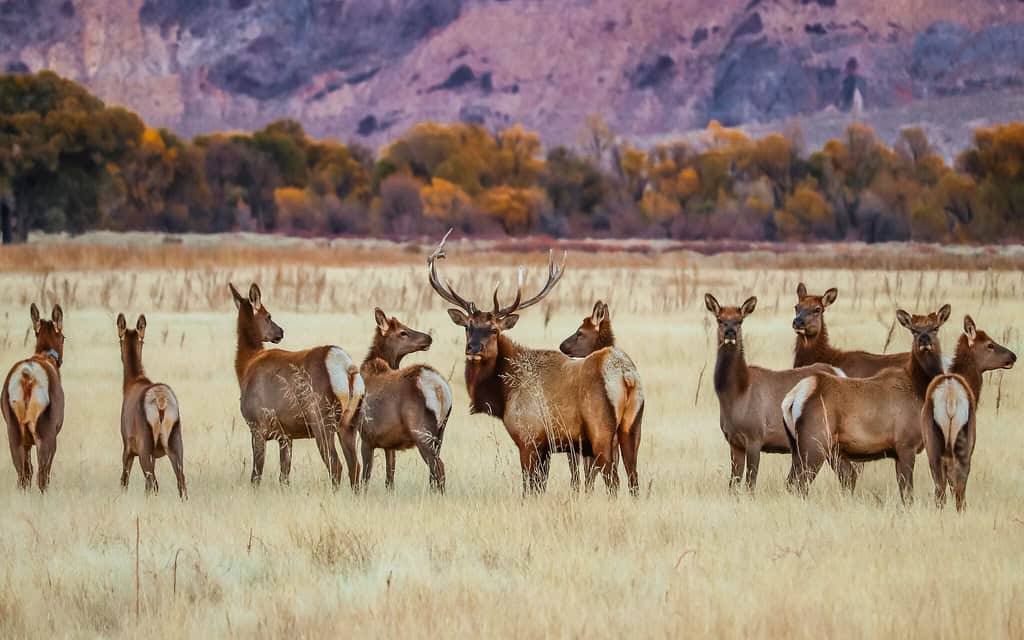Few wildlife spectacles in North America match the majesty of massive elk herds roaming across the landscape. With their impressive antlers, resonant bugles, and social behaviors, elk (Cervus canadensis) create unforgettable wildlife viewing experiences. For many wildlife enthusiasts and photographers, witnessing hundreds of these magnificent creatures in their natural habitat becomes a bucket-list adventure. The United States offers several premier destinations where visitors can reliably observe substantial elk populations throughout different seasons, particularly during the fall rut when bulls compete for mating rights with dramatic displays and vocalizations. This guide explores the best locations across America where you can witness these magnificent ungulates in impressive numbers, complete with information on optimal viewing times, accessibility, and special viewing opportunities that make each destination unique.
Yellowstone National Park, Wyoming/Montana/Idaho
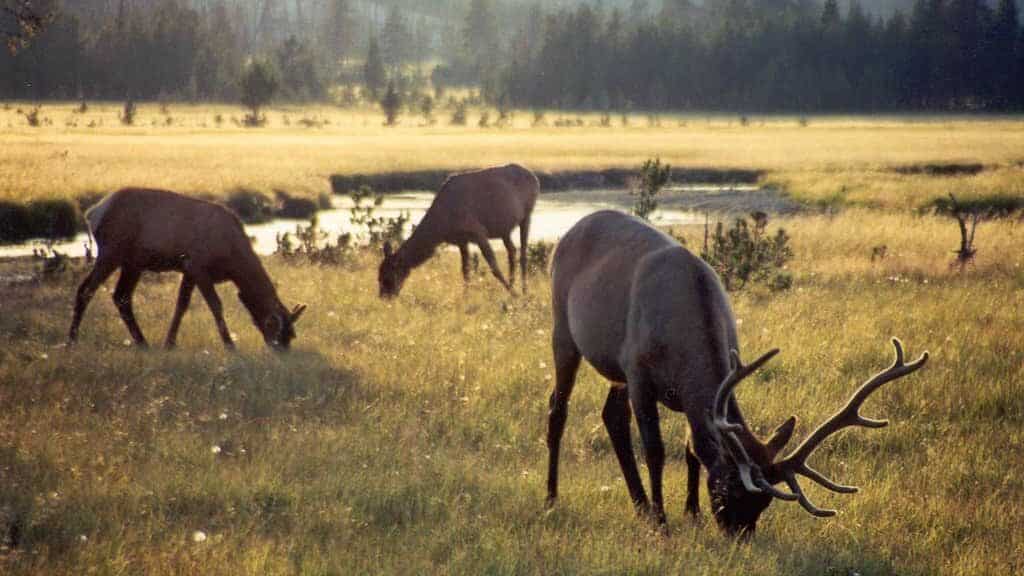
Yellowstone National Park represents one of North America’s premier elk viewing destinations, supporting a northern herd of approximately 10,000-20,000 elk (numbers fluctuate seasonally). The park’s northern range, particularly the Lamar Valley, offers exceptional opportunities to witness these magnificent animals in their natural habitat. During summer months, elk migrate to higher elevations, but come fall, they descend to lower valleys where visitors can observe the dramatic rut season from late August through October. During this period, dominant bulls bugle, displaying their impressive antlers and engaging in confrontations to establish mating rights.
The Madison River corridor provides another excellent viewing area, especially at dawn and dusk when elk are most active. Park rangers often establish designated viewing areas with spotting scopes during peak seasons, allowing visitors to observe the animals safely without disturbing them. For the best experience, bring binoculars or a spotting scope, dress warmly in layers (even in early fall), and maintain the required 25-yard minimum distance from elk. Remember that these are wild animals that can be dangerous when approached too closely, particularly during the rut when bulls are especially territorial and aggressive.
Rocky Mountain National Park, Colorado
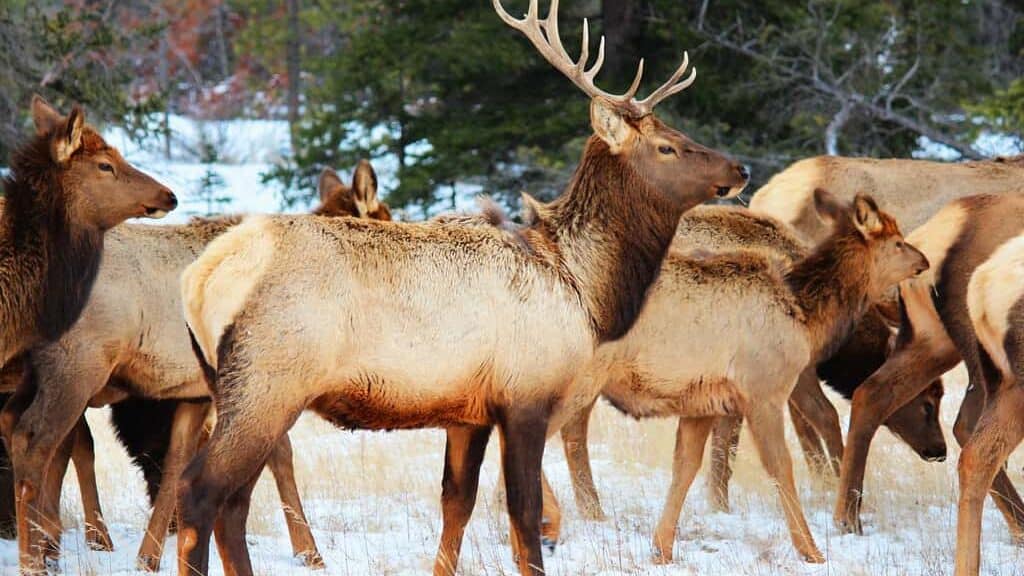
Rocky Mountain National Park hosts approximately 600-800 elk, making it one of Colorado’s premier elk viewing destinations. The park’s Kawuneeche Valley on the west side and Moraine Park on the east side offer exceptional viewing opportunities, especially during the fall rut from mid-September through mid-October. During this season, bulls gather harems of cows and engage in bugling contests that echo throughout the valleys. The ethereal sound of bull elk bugling against the backdrop of golden aspen leaves and snow-capped peaks creates an unforgettable wildlife experience that draws thousands of visitors annually.
The park organizes special elk-watching programs during the rut season, with rangers providing information about elk biology, behavior, and conservation. Evening viewings prove particularly rewarding as herds emerge from forested areas into open meadows. For comfortable viewing, bring warm clothing, a thermos of hot beverages, and camp chairs for extended observation sessions. Beaver Meadows Visitor Center offers an excellent starting point to gather current information about elk activity and the best viewing locations for that particular day. During peak season, consider using the park’s shuttle system to avoid parking challenges at popular viewing spots.
Jackson Hole and National Elk Refuge, Wyoming
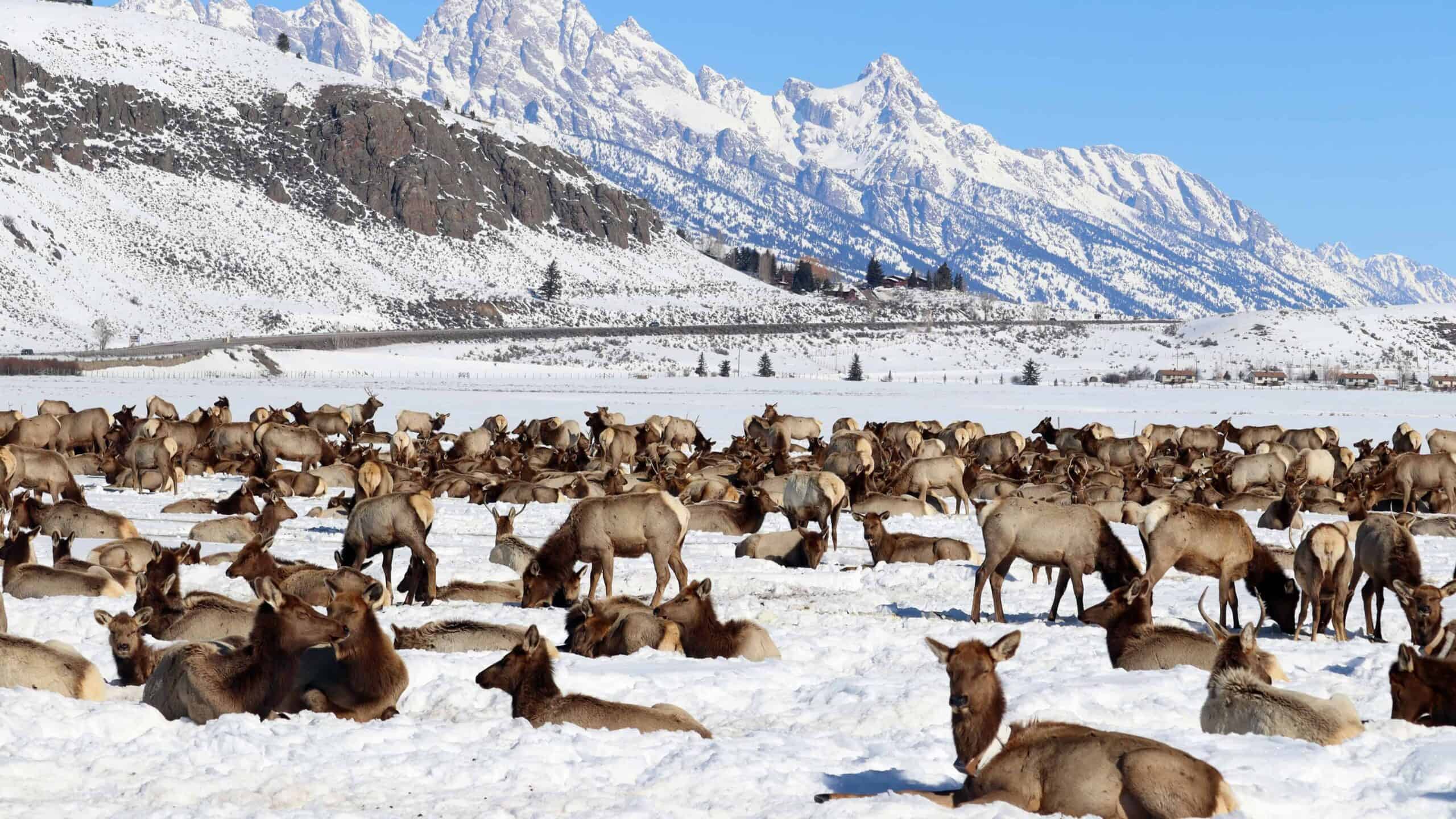
The National Elk Refuge near Jackson, Wyoming provides winter sanctuary for one of North America’s largest elk concentrations, with approximately 7,000-8,000 elk migrating to the refuge during winter months. This migration represents part of the Greater Yellowstone Ecosystem’s impressive Jackson elk herd. From December through April, visitors can observe vast herds spread across the refuge’s 24,700 acres of protected habitat. The refuge offers horse-drawn sleigh rides through the elk herds during winter months, providing an intimate and unique wildlife viewing experience that allows visitors to observe these magnificent animals up close while maintaining a safe and non-disruptive distance.
Beyond winter viewing, the surrounding Bridger-Teton National Forest and Grand Teton National Park offer excellent opportunities to witness elk during their seasonal migrations in spring and fall. The Jackson Hole and Greater Yellowstone Visitor Center provides comprehensive information about current elk activity and viewing opportunities. For photography enthusiasts, the contrast of dark elk against snow-covered landscapes creates dramatic imaging opportunities, especially during the golden light of early morning or late afternoon. Consider bringing a telephoto lens of at least 300mm for quality wildlife photography from a respectful distance.
Theodore Roosevelt National Park, North Dakota
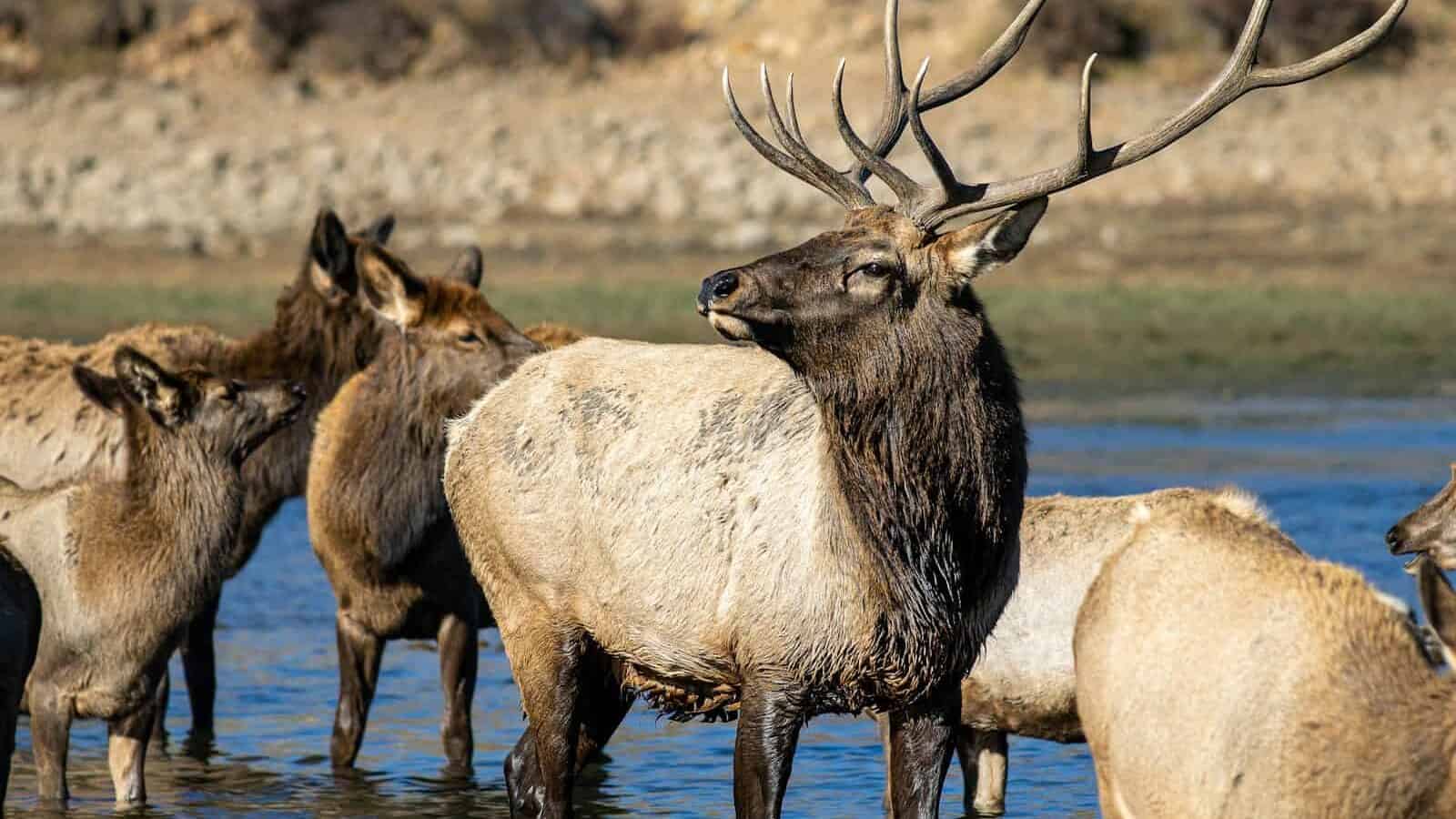
Theodore Roosevelt National Park in western North Dakota hosts a thriving elk population that has successfully rebounded after reintroduction efforts in the 1980s. The park’s South Unit, with its mixed grasslands and badlands topography, provides habitat for several hundred elk. These North Dakota elk exhibit slightly different behavioral patterns than their mountain cousins, adapting to the park’s unique prairie and badlands environment. The park’s 36-mile Scenic Loop Drive offers excellent viewing opportunities, particularly at Buck Hill and Painted Canyon overlooks where visitors can survey large areas with binoculars or spotting scopes.
Early morning and evening hours provide the best viewing times, when elk emerge from woodland areas to graze in open grasslands. The fall rut from September through October offers particularly dramatic viewing as bulls gather harems and challenge rivals. Unlike some more heavily visited parks, Theodore Roosevelt provides a more secluded elk-watching experience with fewer crowds. The park’s visitor center can provide updated information on recent elk sightings and activity. Weather in this region can change rapidly, so visitors should prepare with appropriate clothing and plenty of water, especially during summer months when temperatures can exceed 90°F.
Wind Cave National Park, South Dakota

Wind Cave National Park protects one of the few remaining mixed-grass prairie ecosystems in the United States, providing ideal habitat for a robust elk population of approximately 250-400 animals. The park’s rolling prairie landscape offers excellent visibility for wildlife viewing, with elk frequently spotted along the park’s main roadways and hiking trails. The best viewing locations include the Rankin Ridge area and the prairie dog towns along Wind Cave Canyon, where elk often graze alongside bison and pronghorn, creating a scene reminiscent of the historic Great Plains ecosystem that once dominated the American interior.
Unlike more mountainous elk habitats, Wind Cave’s open prairies allow for exceptional long-distance viewing opportunities, particularly during morning and evening hours. The park’s relatively small size (approximately 34,000 acres) and limited road system make it easier for visitors to cover the prime viewing areas efficiently. For a more immersive experience, the park’s backcountry hiking trails, including the Centennial Trail, offer opportunities to observe elk behavior away from roads and vehicles. The diverse ecosystem at Wind Cave means visitors can often observe multiple prairie species during a single outing, making it an excellent destination for wildlife enthusiasts interested in experiencing the broader Great Plains ecosystem.
Pennsylvania Elk Range

The Pennsylvania Elk Range in the state’s north-central region represents one of the most successful elk restoration efforts in the eastern United States. After being extirpated in the late 1800s, elk were reintroduced in 1913, and today the herd numbers approximately 1,400 animals. The Elk Country Visitor Center in Benezette serves as the hub for elk viewing activities, with multiple viewing areas specifically designed to accommodate wildlife watchers without disturbing the animals. The surrounding Elk State Forest and State Game Lands provide over 200,000 acres of protected habitat where these magnificent animals roam.
Unlike western elk populations, Pennsylvania’s elk have adapted to a more forested eastern habitat and show less fear of humans, sometimes venturing into small communities within the elk range. This can provide exceptional close viewing opportunities, particularly during the September-October rut. The region offers organized elk viewing tours and maintains several dedicated viewing areas with informational displays about elk biology and conservation. Fall foliage season coincides with the elk rut, creating spectacular backdrop of colorful hardwood forests for wildlife watching and photography. The visitor center provides updated information on recent elk activity and sightings to maximize viewing success.
Great Smoky Mountains National Park, Tennessee/North Carolina
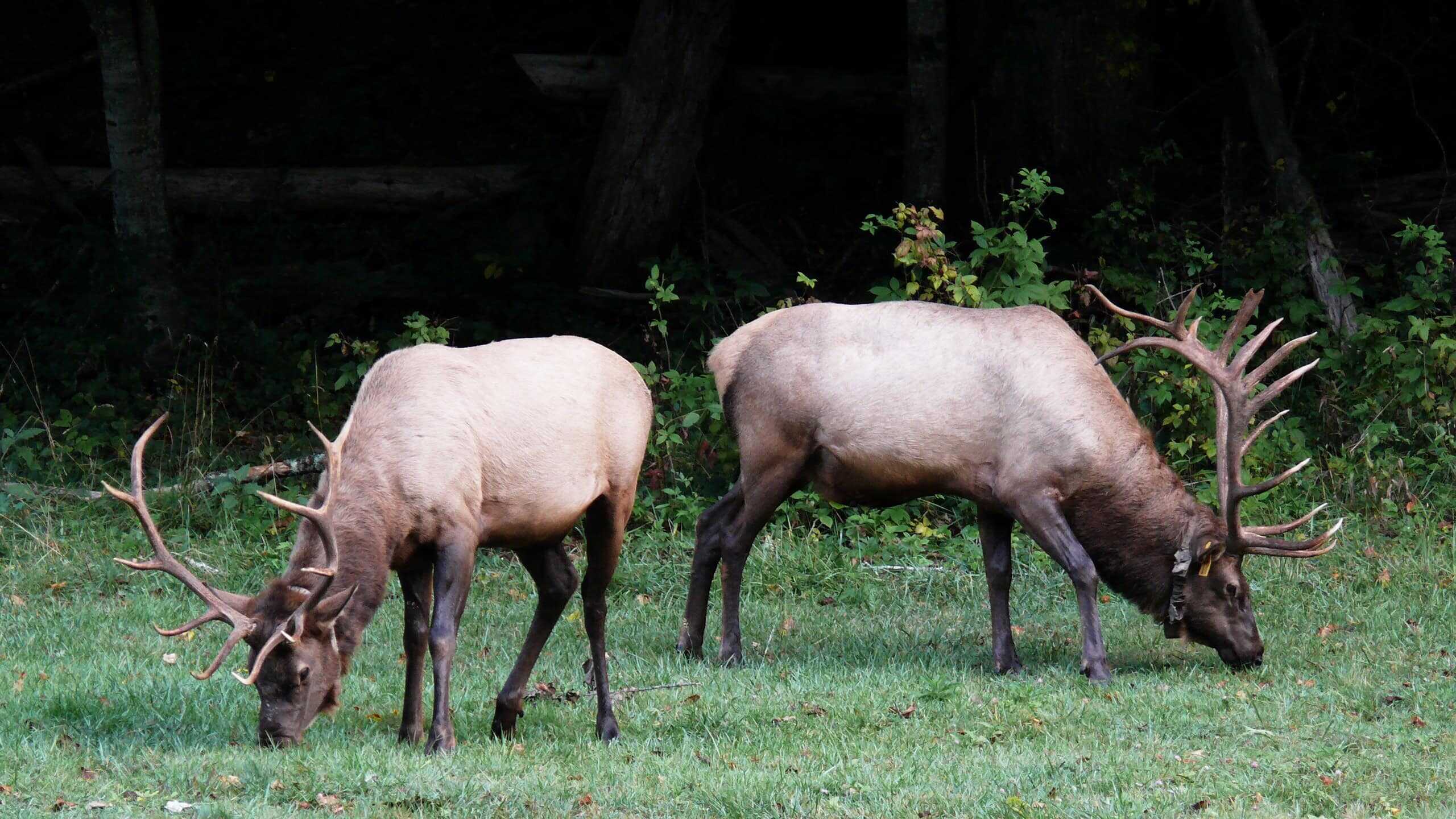
Following successful reintroduction efforts beginning in 2001, Great Smoky Mountains National Park now hosts a growing elk population of approximately 200 animals. The Cataloochee Valley in the North Carolina section of the park offers the most reliable viewing opportunities, with elk frequently visible in the valley’s open meadows surrounded by historic structures that provide a unique backdrop for wildlife watching. These eastern elk differ somewhat from their western counterparts in both appearance and behavior, having adapted to the densely forested environment of the southern Appalachians.
Morning and evening provide optimal viewing times when elk emerge from forest cover to graze in the valley’s meadows. The fall rut from September through October attracts many wildlife enthusiasts, though spring viewing also offers excellent opportunities to observe cows with newborn calves. Park rangers conduct educational programs about elk ecology and conservation during peak seasons. The remote location of Cataloochee Valley means fewer crowds than other park areas, allowing for a more peaceful wildlife viewing experience. Visitors should note that the access road to Cataloochee includes several miles of narrow, winding gravel road that may not be suitable for all vehicles, especially during inclement weather.
Point Reyes National Seashore, California

Point Reyes National Seashore in Northern California offers a unique opportunity to observe tule elk (Cervus canadensis nannodes), a subspecies native to California that nearly went extinct in the late 1800s. The Tomales Point Elk Reserve within the seashore protects a free-ranging herd of approximately 400-500 tule elk. These elk are slightly smaller than Rocky Mountain elk, with distinctive adaptations to California’s coastal ecosystem. The Tomales Point Trail provides excellent viewing opportunities as it traverses the length of the reserve, with elk frequently visible on both sides of the peninsula grazing in coastal prairie habitat.
The dramatic coastal setting with the Pacific Ocean as a backdrop creates spectacular photographic opportunities unlike any other elk viewing location in America. Fall brings the rutting season from August through October, when bulls gather harems and engage in bugling contests that echo across the coastal headlands. The Bear Valley Visitor Center provides current information on elk activity and best viewing areas. Unlike many elk viewing destinations, Point Reyes offers moderate temperatures year-round, though coastal fog and wind can create challenging conditions. Visitors should dress in layers and bring binoculars, as the open landscape allows elk to be spotted at considerable distances.
White Mountain National Forest, New Hampshire

The reintroduction of elk to New Hampshire’s White Mountain National Forest represents one of the newest elk restoration efforts in the United States. Though the population remains smaller than western herds at approximately 100-150 animals, these eastern elk provide a unique viewing opportunity in New England’s mountainous forest habitat. The Kancamagus Highway (Route 112) corridor offers several pull-offs and clearings where elk can be observed, particularly in early morning and evening hours. The Milan Hill State Park area provides additional viewing opportunities, especially during spring and fall seasons.
Unlike western herds that often inhabit open meadows and valleys, White Mountain elk have adapted to the dense northern forest environment, making viewing more challenging but potentially more rewarding when successful. The regional fall foliage season coincides with the elk rut, creating spectacular backdrops for wildlife observation and photography. The Androscoggin Ranger Station provides updated information on recent elk sightings and activity throughout the forest. Winter viewing opportunities exist along plowed forest roads, though access becomes more limited during heavy snow periods. For the adventurous wildlife enthusiast, this emerging elk population offers a chance to witness the early stages of a significant wildlife restoration success story.
Great Sand Dunes National Park, Colorado
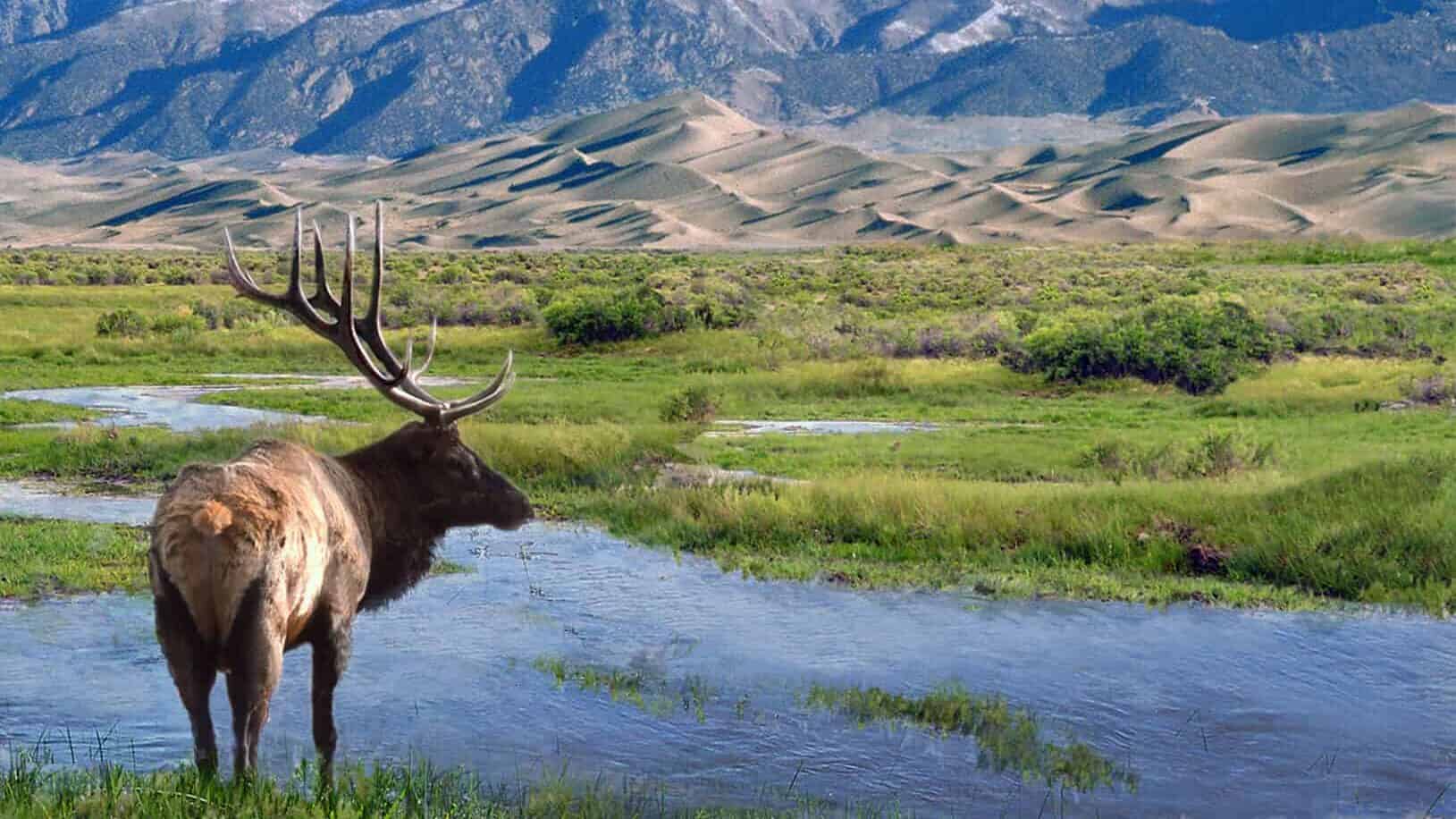
Great Sand Dunes National Park and Preserve in southern Colorado supports a healthy elk population of approximately 300-400 animals that move between the park’s diverse habitats. The unique landscape, where North America’s tallest sand dunes meet the Sangre de Cristo Mountains, provides a spectacular backdrop for elk viewing. During summer months, elk retreat to higher elevations within the preserve, but fall brings them down to lower elevations where they can be observed along the park’s main roads and near the visitor center. The Medano Pass primitive road area offers particularly good viewing opportunities during morning and evening hours.
Unlike more visited elk destinations, Great Sand Dunes receives fewer wildlife watchers, creating a more solitary and peaceful viewing experience. The park’s diverse ecosystem means elk can be observed in multiple habitat types, from wetlands and grasslands to forested mountain slopes. The elevated viewing areas near the dune field provide excellent vantage points to scan for elk herds with binoculars or spotting scopes. The park visitor center offers current information on elk activity and seasonal movement patterns. For photographers, the juxtaposition of elk against the massive dune field creates unique imaging opportunities unlike any other elk habitat in North America.
Valles Caldera National Preserve, New Mexico

Valles Caldera National Preserve in northern New Mexico protects a 13.7-mile wide volcanic caldera that provides ideal habitat for one of the Southwest’s largest elk herds, numbering approximately 2,500-3,000 animals. The preserve’s vast grassland valleys surrounded by forested mountains create a unique landscape where elk can be readily observed across great distances. The Valle Grande, the preserve’s largest valley, offers exceptional viewing opportunities, particularly during morning and evening hours when elk emerge from forest cover to graze in open meadows. The preserve’s relatively high elevation (8,000-11,000 feet) means elk remain active during summer months when herds in lower elevations seek shelter from heat.
The preserve offers guided wildlife tours during peak seasons, providing access to areas normally closed to private vehicles. During the fall rut from mid-September through October, the valleys resonate with the sounds of bugling bulls gathering harems and challenging rivals. The preserve visitor center provides current information on elk activity and viewing opportunities. Winter brings a different viewing experience as elk concentrate in lower elevations where snow depth is manageable and food remains accessible. The caldera’s unique bowl-shaped topography creates exceptional acoustics during the rut, with bugling sounds carrying across the entire valley. For wildlife photographers, the sweeping vistas and excellent light conditions create memorable opportunities to capture elk in their natural habitat.
Successful elk viewing requires proper planning and preparation regardless of your chosen destination. Timing proves crucial—the fall rut (mid-September through mid-October) offers the most dramatic behavioral displays, while early summer provides opportunities to observe cows with newborn calves. Early morning (first light) and evening (last light) consistently provide the best viewing times when elk are most active. Essential equipment includes quality binoculars (8×42 or 10×42 recommended), appropriate clothing for changing weather conditions, and a spotting scope for distant observation. Remember that ethical wildlife viewing requires maintaining appropriate distances (minimum 50-100 yards) and avoiding behaviors that disturb or displace animals.
Before visiting any destination, check current regulations and wildlife alerts, as some areas implement seasonal closures to protect elk during sensitive periods. Consider contacting visitor centers or local wildlife offices before your trip to gather updated information on recent elk activity and optimal viewing locations. Many destinations offer ranger-led programs specifically focused on elk ecology and viewing opportunities during peak seasons. For photographers, research specific locations beforehand to understand lighting conditions and positioning options. Finally, practice patience—successful wildlife viewing often requires time and persistence, but the reward of witnessing these magnificent animals in their natural habitat creates lasting memories well worth the effort.
- The Most Bizarre Animal Migration You’ve Never Heard Of - August 20, 2025
- Fierce Animal Moms Who Would Do Anything for Their Babies - August 20, 2025
- The Secret Life of the Saola: Asia’s Hidden “Unicorn” - August 20, 2025

